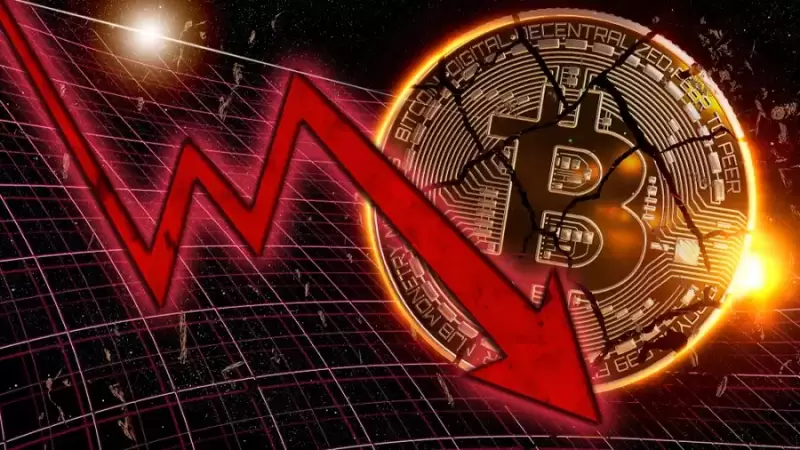 |
|
 |
|
 |
|
 |
|
 |
|
 |
|
 |
|
 |
|
 |
|
 |
|
 |
|
 |
|
 |
|
 |
|
 |
|
近幾個月來,質押越來越受歡迎,ETH 不斷擴大的用例促使許多投資者紛紛買入該貨幣。

Crypto staking, which was created to secure a blockchain network, has taken off, and more investors are looking for sites where they may stake Ethereum. Simply put, staking Ethereum is the act of storing a given quantity of Ethereum for a particular period for the purpose of contributing to the security of the blockchain network and also receive Ethereum staking rewards.
為保護區塊鏈網路而創建的加密貨幣質押已經開始流行,越來越多的投資者正在尋找可以質押以太坊的網站。簡單來說,質押以太坊就是在特定時期內儲存一定數量的以太幣,目的是為區塊鏈網路的安全做出貢獻,同時獲得以太坊質押獎勵。
What Is Ethereum 2.0?
什麼是以太坊2.0?
Ethereum 2.0, also known as Serenity or ETH 2.0, is a multi-level update to Ethereum. Its main goal is to enhance Ethereum’s transaction capacity, lower fees, and make the network more sustainable. Ethereum 2.0 (ETH2) is a network upgrade that attempts to improve the security and scalability of the Ethereum network. Ethereum’s existing mining process will be replaced by a staking model as part of this upgrade.
以太坊 2.0,也稱為 Serenity 或 ETH 2.0,是以太坊的多層更新。其主要目標是增強以太坊的交易能力、降低費用並使網路更具可持續性。以太坊2.0(ETH2)是網路升級,試圖提高以太坊網路的安全性和可擴展性。作為此次升級的一部分,以太坊現有的挖礦流程將被質押模型取代。
The method on which the earlier and new versions of Ethereum are based or used is the critical difference between them. The Proof of Stake (PoS) consensus mechanism is used in Ethereum 2.0, while the Proof of Work (PoW) consensus mechanism is used in Ethereum.
以太坊的早期版本和新版本所基於或使用的方法是它們之間的關鍵差異。以太坊2.0採用的是權益證明(PoS)共識機制,而以太坊採用的是工作量證明(PoW)共識機制。
What Is Ethereum Proof of Stake?
什麼是以太坊權益證明?
Ethereum protocol developers have switched from a proof-of-work (PoW) consensus model to a proof-of-stake (PoS) consensus model as part of their intentions to enable a faster and more environmentally friendly transaction validation procedure. Unlike mining, staking can be done on regular PCs or laptops, eliminating the need for electricity mining equipment.
以太坊協議開發人員已從工作量證明 (PoW) 共識模型轉向權益證明 (PoS) 共識模型,以實現更快、更環保的交易驗證程序。與挖礦不同,質押可以在普通個人電腦或筆記型電腦上完成,無需電力挖礦設備。
Ethereum Proof-of-stake is a consensus mechanism that blockchain networks use to reach distributed consensus in which users must stake a certain amount of Ethereum to become validators, as opposed to proof-of-work, which requires users to buy and run mining equipment, or proof-of-authority, which requires users to show proof of their identities. Validators, like miners in proof-of-work, are in charge of arranging transactions and constructing new blocks so that all nodes can agree on the network’s state.
以太坊權益證明是區塊鏈網路用來達成分散式共識的共識機制,其中用戶必須抵押一定數量的以太坊才能成為驗證者,而不是工作量證明,後者要求用戶購買並運行採礦設備,或權威證明,要求用戶出示其身分證明。驗證者,就像工作量證明中的礦工一樣,負責安排交易和建立新區塊,以便所有節點都能就網路狀態達成一致。
Why Ethereum 2.0 Is Moving To PoS?
為什麼以太坊2.0要轉向PoS?
One of the primary reasons for the consensus switch is to drastically lower the amount of energy required to validate transactions and create new ETH. Proof-of-work is the original mechanism used by blockchains. To execute transactions and receive rewards, PoW needs computers to compete against one another. This process consumes a lot of energy and takes a lot of time.
共識轉換的主要原因之一是大幅降低驗證交易和創建新 ETH 所需的能量。工作量證明是區塊鏈使用的原始機制。為了執行交易並獲得獎勵,PoW 需要電腦相互競爭。這個過程消耗大量的能量並且需要大量的時間。
As a result, some emerging cryptocurrencies have chosen a different path: proof-of-stake. Because the present cost of transactions on Ethereum’s network is excessively expensive and inhibits many people from using it, the upgrade to version 2.0 will see it switch to PoS. If this update is successful, the lower rates it would bring to the network will make it more accessible to average users.
因此,一些新興的加密貨幣選擇了一條不同的道路:權益證明。由於目前以太坊網路上的交易成本太昂貴,阻礙了許多人使用它,升級到2.0版本將看到它轉向PoS。如果此更新成功,將為網路帶來的較低費率將使普通用戶更容易存取。
The proof-of-stake system improves on the proof-of-work approach in several ways. There is a higher level of energy efficiency so mining blocks do not require a lot of energy. Moreover, there are fewer entrance hurdles and fewer hardware requirements, you don’t require top-of-the-line technology to create new blocks. Because it’s easier to use, the new 2.0 system has a good advantage in attracting additional node operators. This will aid in the decentralization of the new network.
權益證明系統在多個方面改進了工作量證明方法。能源效率較高,因此採礦區塊不需要大量能源。此外,進入障礙更少,硬體需求也更少,您不需要頂級技術來創建新區塊。由於更易於使用,新的2.0系統在吸引額外的節點運營商方面具有良好的優勢。這將有助於新網路的去中心化。
PoS on Ethereum is also intended to set the framework for “sharding,” which is a partitioning technique that allows numerous parallel chains to efficiently share data and transaction load. When paired with a supplementary scaling component called “rollups,” these shard chains could allow Ethereum to process up to 100,000 transactions per second. That’s a significant increase above the 10-15 transactions per second it now executes.
以太坊上的 PoS 還旨在為「分片」建立框架,這是一種分區技術,允許眾多並行鏈有效地共享資料和交易負載。當與稱為「rollups」的補充擴展組件配合使用時,這些分片鏈可以允許以太坊每秒處理多達 100,000 筆交易。這比現在每秒執行 10-15 筆交易有了顯著成長。
How Ethereum Staking Works
以太坊質押如何運作
The PoS-powered blockchain, unlike the PoW-based blockchain, bundles 32 blocks of transactions during each round of validation, which lasts on average 6.4 minutes. These clumps of blocks are referred to as “epochs.” When two more epochs are added to the blockchain, it is considered complete, meaning the transactions it holds are irreversible.
與基於 PoW 的區塊鏈不同,基於 PoS 的區塊鏈在每輪驗證期間捆綁 32 個交易區塊,平均持續 6.4 分鐘。這些塊塊被稱為“紀元”。當區塊鏈中再添加兩個紀元時,它被認為是完整的,這意味著它所持有的交易是不可逆轉的。
Stakeholders are divided by the Beacon Chain into 128 “committees” and assigned to a certain shard block during the validation phase (also known as the “attesting process”). Each committee has a designated period for proposing new blocks and validating the transactions within them, referred to as a “slot.” Each epoch has 32 slots, which means each epoch requires 32 sets of committees to complete the validation process. Once a committee has been assigned to a block, one member at random is given the exclusive power to propose a new block of transactions, while the remaining 127 members vote on the proposal and attest to the transactions.
利害關係人被信標鏈分為 128 個“委員會”,並在驗證階段(也稱為“證明過程”)分配到某個分片區塊。每個委員會都有指定的期限來提議新區塊並驗證其中的交易,稱為「時段」。每個 epoch 有 32 個槽位,這意味著每個 epoch 需要 32 組委員會來完成驗證過程。一旦委員會被分配到一個區塊,隨機一名成員將獲得提議新交易區塊的專有權力,而其餘 127 名成員對該提案進行投票並證明交易。
The new block is added to the blockchain and once majority of the committee has attested to its insertion, a “cross-link” is created to validate it. The staker who
新區塊被添加到區塊鏈中,一旦委員會的大多數成員證明其插入,就會創建一個「交叉連結」來驗證它。質押者
免責聲明:info@kdj.com
所提供的資訊並非交易建議。 kDJ.com對任何基於本文提供的資訊進行的投資不承擔任何責任。加密貨幣波動性較大,建議您充分研究後謹慎投資!
如果您認為本網站使用的內容侵犯了您的版權,請立即聯絡我們(info@kdj.com),我們將及時刪除。
-

-

- Kishu(OK X)將注意力作為高利潤機會,基金為0.15%。
- 2025-04-04 10:30:12
- FTT有機會每天損失15.66美元,每天損失291.8美元。
-

- 唐納德·特朗普(Donald Trump)的新185個國家關稅計劃將比特幣和加密貨幣市場陷入短暫的混亂
- 2025-04-04 10:25:12
- 比特幣以及整個加密貨幣市場,在過去的幾個小時中,新浪的看跌感官擊中
-

-

- 隨著2025年4月的展開,加密貨幣市場處於不斷變化狀態
- 2025-04-04 10:20:12
- 比特幣(BTC)保持其位置約為85,000美元,以太坊(ETH)和XRP試圖獲得動力
-

-

- 加密貨幣市場正經歷著巨大的湍流,以太坊(ETH)也不例外
- 2025-04-04 10:15:28
- 加密貨幣市場正經歷著巨大的湍流,以太坊(ETH)也不例外。以太坊(ETH)墜毀以下
-

-


























































